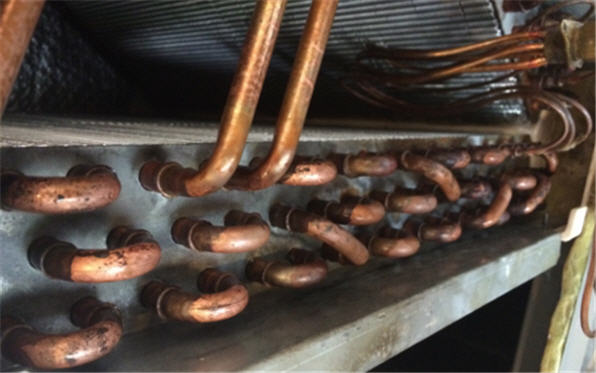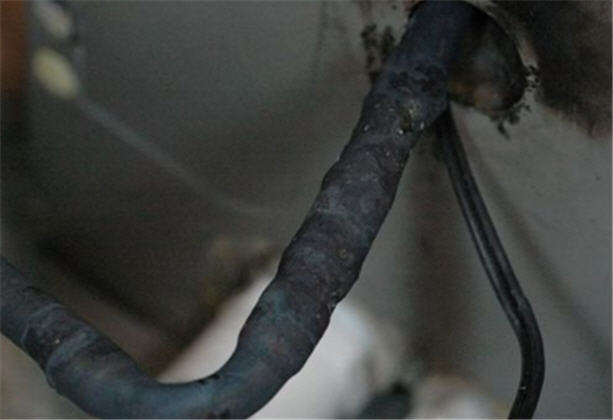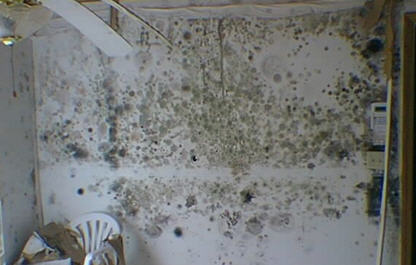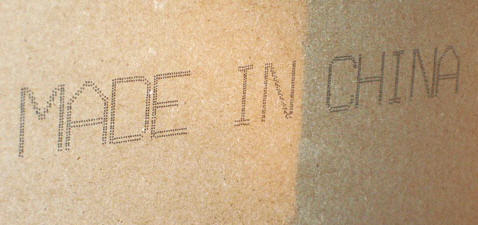“Chinese drywall” refers to an issue involving defective drywall manufactured in China and imported to the United States. This defective drywall was used in residential construction between the years 2001 and 2009. The problem was quite significant in size, spanning across 20 states and effecting as much as 100,000 homes, as recorded by an NPR news story.
The Core Of The Defect
The root of the problem was excessively high chemical concentrations used in manufacturing. The defective drywall would emit, or off-gas these chemicals after it was installed in newly-constructed homes and buildings. These gasses included very volatile chemicals and sulfurous gases — including (but probably not limited to) carbon disulfide, carbonyl sulfide, and hydrogen sulfide. Both increased heat and humidity would intensify the off-gassing, causing harm to both humans as well as the structure.
Harmful Effects
Homeowners living in houses having the defective drywall reported a variety of health issues including respiratory problems such as asthma attacks, chronic coughing and difficulty breathing. Many people also complained of frequent headaches and sinus troubles. The Boston Children’s Hospital issued public recommendations for the General Public Related to Health Effects from Chinese Drywall. The detrimental concerns were not limited to people. The off-gassing of the chemicals also caused obvious visible damage to the structures that were built with the defective drywall.
The drywall emitted various sulfur gasses listed above. These gasses not only created a noxious odor that caused health issues in humans, they also corroded copper and other metal surfaces, which can damage a structure’s air conditioner, electrical wiring, copper plumbing, appliances and electronics; basically any component that contained copper.



Background and History
In 2005, the devastating Hurricane Katrina caused catastrophic damage to thousands upon thousands of homes in the Gulf coast area of the United States. Additionally, the country was in the mist of a housing boom spurred by extremely low interest rates coupled with easy financing requirements. As a result of these factors, drywall was in short supply, and to meet demand approximately 550 million pounds of Chinese drywall was imported into the United States to sufficiently meet demand.
As of April 19, 2012 the four Gulf Coast states of Alabama, Mississippi, Louisiana and Florida made up 86% of the 3,952 cases reported to the U.S. Consumer Product Safety Commission (CPSC). The breakdown is illustrated in the following image that the CPSC published at the time:

The exact breakdown of the reported incidents by states as of that date was:
State # of Incidents
AL 244
AZ 9
AR 5
CA 34
CT 2
DE 2
DC 5
FL 2214
GA 38
ID 1
IL 6
IN 10
IA 1
KS 6
KY 8
LA 719
ME 2
MD 9
MA 6
MI 6
MN 2
MS 249
MO 9
MT 1
NE 2
NV 8
NJ 6
NM 1
NY 11
NC 34
OH 8
OK 4
PA 10
RI 1
SC 5
SD 1
TN 13
TX 50
VT 1
VA 183
WA 12
WV 2
WI 4
WY 1
American Samoa 1
Puerto Rico 1
unknown 5
Total: 3952
Source & Origination
Knauf Plasterboard Tianjin Co., Ltd., has been identified as a major producer of the defective Chinese drywall that was imported to the United States. There are, however, a several other Chinese companies which are thought to have manufactured defective drywall, but Knauf’s name is identified most frequently, primarily because the company prints its name on its products. Much of the other defective drywall has no markings, making it very difficult to track down its origin.
In spite of reports that more than 550 million pounds of drywall has been imported from China since 2006 – including much from the known principal manufacturer of the contaminated drywall, Knauf – that is a mere fraction of domestic drywall demand for the period. Drywall manufacturing in the United States averages over 15 million tons (30,000 million pounds) per year, meaning that imported Chinese drywall only amounted to well under 2% of all drywall purchased. Estimates are that the defective drywall was been used to construct approximately 60,000 to 100,000 new homes. With new home construction in the United States being produced at a rate of more one million units annually, this does give one an idea of the scope of those affected.
Gypsum wallboard sheets will sometimes have a source printed on the back. Chinese drywall may be printed with “Made in China”, “China”, “Knauf Tianjin”, on the back of the sheet, however, it may have no printing at all. Also, it is very common for a new home to have been built with drywall from multiple sources, which could include both American and imported. On nearly every job that we perform, different length sheets are used, ranging in length from 8 feet to 16 feet. Each length could and often does come from a different manufacturer, depending upon where our supplier sourced it from. Therefore, if you suspect your home has defective drywall from China, the presence of USA made drywall in one area does not mean that imported wallboard from China isn’t present in a different location of your home.
In April 2009, national home improvement chain stores The Home Depot and Lowe’s confirmed from their suppliers that no drywall sold in their stores was imported from China. However, Lowes did eventually settle lawsuits by offering up to $100,000 for each affected home but continued to deny selling any defective Chinese drywall.
That same year CBS News paid for a study that compared US-made drywall to gypsum wallboard that had been manufactured in China. When results came back from the University of Florida, they found that, “As expected, the contaminated Chinese samples gave off high levels of sulfur gases. But all but one of the U.S. samples emitted sulfur gases, as well – not at levels as high as the defective Chinese product, but unexpected.”

Other laboratory examinations that compared Chinese-made to American-made gypsum board showed significantly higher levels of pyrite in the Chinese samples, according to a study reported by the Engineering News Record. This would imply that pyrite oxidation may be the source of the excessive sulfur compounds released by Chinese drywall.
In a different study by Swiss Reinsurance America Corporation, the problems were attributed to the use of fly ash in the gypsum board, which will degrade in the presence of heat and moisture; although gypsum wallboard made in the United States uses fly ash as well, and the manufacturing process employed does create a cleaner final product.
According to a 2010 laboratory study, one hundred percent of affected drywall samples obtained from homes located in the southeastern United States tested positive for the presence of Acidithiobacillus ferrooxidans, an iron and sulfur reducing bacterium. Samples of non-contaminated drywall were found to contain only minuscule levels of A. ferrooxidans.
Proper Testing Methods
The Florida Department of Health issued guidelines “to help identify homes that are affected by corrosion associated with drywall emissions.” Their fact sheet to help homeowners determine if they have a confirmed case or not can be found here. Of course, home inspectors are quite aware of this problem. The
American Home Inspectors Training Institute issued some guidelines as well. You can read their statement on Chinese drywall. They list signs to look for – such as a smell of sulfur – as well as proper testing methods.
Where To Find Help
The Insurance Information Institute issued a fact sheet on problem Chinese drywall explaining the types of damages that are covered by most homeowner policies. They specifically address issues related to Chinese drywall and the damage caused by the defective material. The fact sheet also discusses what a homeowner should do if faced with the problem. You can read their statement on their web page. Even though the problem surfaced about a decade ago, court cases involving faulty Chinese drywall are now revving up. The issue continues to fester in many American homes.

